
Japan in the first blush of spring is nectar to the swarm of tourists that descend on the country to experience the famous Sakura or cherry blossom season.
There are over a hundred varieties of cherry blossoms in Japan, differentiated by the number of petals and its hues. Sakura in bloom is a sight to behold, but its beauty is short-lived; the flowering trees typically reach full bloom in a week after the appearance of first blossoms, and shed its petals a week after.
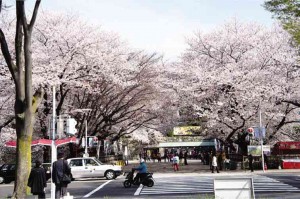
Today’s unpredictable climate makes it hard to pinpoint exactly when to go to Japan to see cherry blossoms. But thanks to that country’s vast geography, it’s still possible to catch the flowers in bloom if you know where to go.
In Central Japan, for example, we experienced the best of two seasons, winter and spring, during the first week of April. We started the adventure to the Chubu region via Cebu Pacific’s maiden voyage to Nagoya.
Auspicious trail
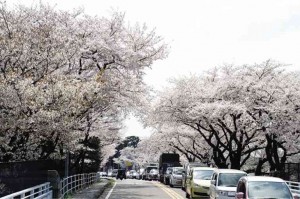
Upon arriving at Chubu Centrair International Airport, the gateway to exploring Central Japan, we made our way upwards via the Shoryudo route. Shoryudo, or the “dragon-rise region,” is a fanciful nickname given to a dragon-shaped path covering nine prefectures in Chubu and Hokuriku. This road is also known to be an auspicious trail for those looking for business opportunities.
Since we had only five days in Central Japan, we spent our Shoryudo visit focused on the dragon’s “belly,” the Gifu and Aichi prefectures.
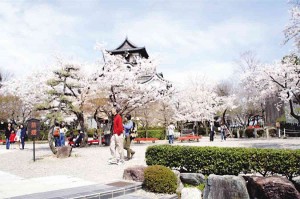
Gifu is often called the heartland of Japan and it’s easy to see why. Despite its modern roads, Gifu and its cities are well-preserved areas of living history, bisected by pristine rivers and peppered with old houses, villages, and castles that have outlasted the shogunate era.
Though we were in rural Japan, the presence of Filipino immigrants was evident at the Gujo Odori dance museum when our guide demonstrated traditional dance steps in Tagalog.
Art of faking food
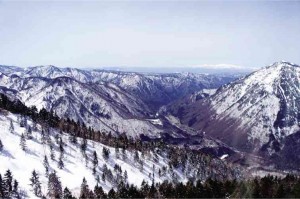
At Gujo Hachiman, canals flanked each quaint house along the street, serving as a symbol of the town as well as providing a clean source of water to its residents. The city is also known for being the hometown of Takizo Iwasaki, the man responsible for kickstarting the food replica industry in the 1920s. Many tourists flock here to see firsthand the art of faking food.
As we moved higher to visit Shirakawa-go, one of Unesco’s World Heritage sites, the temperature dropped and we found ourselves surrounded by the remnants of winter—piles of melting snow coupled with barren mountains that had a few early bloomers showing signs of green against the snow-laden branches.
Best beef
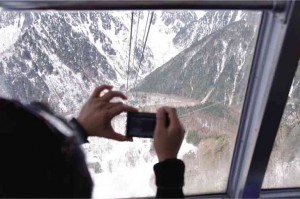
Our next stop was the picturesque city of Hida Takayama, home of the Shinhotaka Ropeway and the best beef you will ever taste (Hida beef and its melt-in-your mouth marbled texture blows Kobe beef out of the water).
If you find yourself in Hida Takayama, make sure to stop by the Miyagawa morning market before going to the Shinhotaka Ropeway. The market has vendors selling handicrafts native to the region. Pick up a few pieces of ichii ittobori, or intricate handmade carvings from yew wood. Carvings range from the cute, like small keychains of kittens, owls and bears, to more intricate display pieces featuring Japanese symbols. Because the carvings are made from yew wood, the color of the piece will change and gain a rich and dark patina over time.
At the Shinhotaka Ropeway, spring has not yet found its way to the area, as you will see once you make the ascent to the viewing deck via cable car. At the entrance to the deck, you will be greeted by a blast of frigid air, along with a fat, cheerful snowman. The altitude can make you hyperventilate, but it is the 360-degree, crystal-clear view of the Japanese Alps, perfectly formed and snow-capped, that will take your breath away. Any photo you take from the viewing deck, whether with a fancy camera or just your camera phone, would look like a pretty postcard.
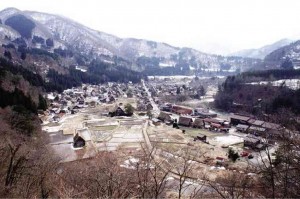
Water of beauties
From appreciating beauty to imbibing it, we headed down to the city of Gero, known for its magical hot springs (one of Japan’s three great hot springs). The city is sprinkled with bubbling fountains called ashiyu, or foot baths, where you can dip your feet and warm yourself up against the cold or to boost your blood circulation.
Gero’s hot springs are also called “water of beauties” because of its alkalinity which clears skin and hair of impurities, leaving you with a rosy, smooth countenance. In fact, the waters of Gero are so precious that once you submerge yourself into the hot springs, you are advised not to towel off the water, so that your body can “drink” it all in.
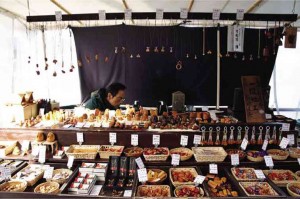
Sakura overload
As we neared the tail-end of our Central Japan sojourn, we made our way back to the Aichi prefecture—stopping at Inuyama Castle, the oldest standing castle in Japan and one of many that still bears witness to its tumultuous past. The castle has also been named as one of Japan’s National Treasures.
Inuyama in spring should not be missed, as the entire area is replete with cherry blossoms. Make the effort to climb up the steep steps to get to the top of the castle, where you will see an unobstructed view of the Kiso River.
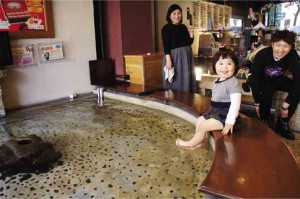
Before heading back to Nagoya, we stopped by the Nagashima Spa Land, a leisure complex with roller coasters, a giant Ferris wheel, a seawater pool, an outlet mall, and accommodations.
We spent the last day on a “blitz tour”— stopping first at Nagoya Castle, newly restored and resplendent with fragrant cypress floors and gold-paneled walls, then heading to the Toyota Techno Museum, a vital piece of Nagoya’s history because the city is known as Japan’s Detroit, the birthplace of the Toyota automotive brand.
We ended the trip with a shopping expedition at the Osu shopping district, where Komehyo is also located. Komehyo sells second-hand designer goods and is a favorite haunt of those seeking a good bargain.
Plan your Central Japan adventure
How to make the most out of your trip to the Chubu region
Fly Cebu Pacific
Traveling to Japan doesn’t have to be expensive since Cebu Pacific now offers four weekly flights between Manila and Nagoya for as low as P5,499—easily 70 percent lower than other airlines (it also flies direct to Narita).
For bookings and inquiries, log on to www.cebupacificair.com or call 7020888 or (032) 230-8888. Follow @CebuPacificAir on Twitter and be the first to know about seat sales.
Do your research
Japan’s tourism office makes it easy for tourists to plan itineraries to its regions. Log on to www.jnto.go.jp for a list of suggested itineraries and points of interest per region.
Centrair support
Centrair Airport wants you to get the most out of your stay in Central Japan; each region has many perks awaiting tourists. Stop by Centrair’s tourist information office which has all the brochures and guides that you’ll need. Or log on to www.centrair.jp/en/tourist-info. The brochures often have special tickets or coupons offering tourists discounts or free gifts when visiting a particular tourist spot.
Get a guide
If your schedule is tight and you want to see as much of the attractions as possible, we highly recommend getting a licensed tour guide. Aside from recommending an interesting itinerary, the guide can also enrich the experience by interpreting information in English so you can immerse yourself in Japan’s rich culture. Our guide, Yoshi Tomiyama, is a freelance licensed guide interpreter who was accommodating, friendly and fun. She’s done several tours with other Filipino groups, so she knows what makes us tick (make sure to also inform her what you want to see/do during the trip). E-mail her at [email protected].
Get a pocket WiFi
If you plan to explore Central Japan on your own, make sure to stop by the pocket WiFi rental places at Centrair Airport and rent a mobile router for P400-500/day. This will be a huge lifesaver for the times when you’ll need something translated in English. Tatin Yang













































